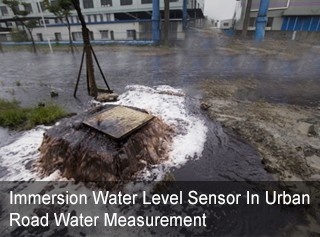Immersion Water Level Sensor In Urban Road Water Measurement
In the process of rapid planning and development of modern cities, underground infrastructure is often ignored because of its occult. For this reason, whenever the rainy season comes, some streets and urban areas often have serious water accumulation, and internal disasters cause inconvenience to people's daily life and travel, and even cause public safety accidents. In order to strengthen the monitoring of urban roads and possible safety accidents during the rainy season or heavy rainfall, the immersion water level sensor is used to detect the water at a specific depth to respond to the regulatory authorities and to issue warning information to the public.
Holykell's HPT604 immersion water level sensor consists of a high-precision diffused silicon piezoresistive pressure sensor as a measuring component that accurately measures the hydrostatic pressure proportional to the depth of the liquid and converts it to a standard (current or voltage) via a signal conditioning circuit. The signal output establishes a linear correspondence between the output signal and the depth of the liquid to achieve measurement of the depth of the liquid. The product has high precision and small volume, and can be directly input into the liquid, so that the liquid height from the end of the transmitter to the liquid surface can be measured, and the utility model is convenient to use.
In the urban road water monitoring, the immersion water level sensor is installed at the set warning height, especially for some low-lying or culverts. When the accumulated water reaches the warning height, the immersion liquid level transducer accurately measures the hydrostatic pressure proportional to the depth of the liquid, and converts it into a standard signal output through the signal conditioning circuit to establish a linear correspondence between the output signal and the liquid depth. To achieve the measurement of the depth of urban water. Since the level sensor can only detect the water level at a certain height and cannot change the water level, it is possible to perform more accurate detection by deploying multiple sensors at different heights, reflecting different levels of water accumulation and changes.
It is precisely because of the current actual measurement needs that the position of the immersion water level sensor is becoming more and more important.






